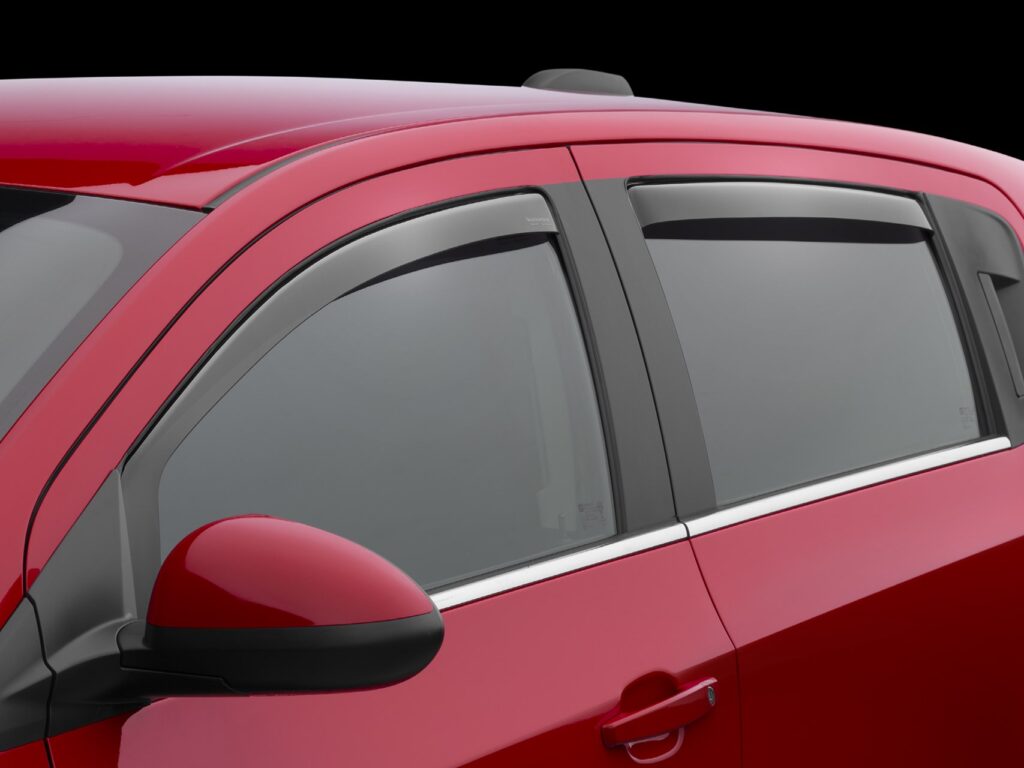Choosing the right window tint during your car window tinting journey involves understanding not just the aesthetics but also the functionality offered by various tint technologies. As a leading car window tint installer in Boston and its surrounding areas, we’ve guided many drivers through this process, focusing on their needs, the legalities, and the advanced technologies available. Let’s dive deeper into how to select your ideal tint shade, incorporating tint technologies into the considerations.
Understand the Basics of Tint Percentages
Tint shades are measured in percentages, representing the amount of light that the tint allows through the window. A higher percentage means more light passes through, while a lower percentage means less light. For example, a 70% tint allows 70% of the light in, making it much lighter than a 5% (limo tint), which allows only 5% of light to pass through.
Consider Your Primary Needs
When considering what tint level you need, the best course of action is to identify the tint’s primary purpose.
- Heat Reduction & UV Protection. The most talked about benefit of car window tints are undoubtedly their protection from the sun. With abundant harmful UV rays emitting from the sun, staying protected is essential. Not only is it important to prevent damage to your interior, but also to your skin. Additionally, many tints also block out solar heat, leaving the inside of your car cool and more comfortable.
- Privacy. More privacy-minded customers will no doubt want something darker, regardless of their UV protection capabilities, as long as it stops any prying eyes from looking inside.
- Aesthetics. Others just want their car to have a specific look. Not only will varying tint levels affect your vehicle, but different finishes and hues will also let your car stand out if you wish.
Know Your Local Tint Laws
Before deciding on a tint shade, it’s crucial to understand the tinting laws in your area. Many regions have specific regulations on dark tints, particularly for the front side windows and windshield. These laws are designed for safety, ensuring that drivers have sufficient visibility. Be sure to check out our guide about Massachusetts window tint laws to see what’s acceptable.
Dive into Window Tint Technologies
Nowadays, it’s not as simple as just picking a tint level and calling it a day. Many different window tint technologies are available now that add flexibility to your tint-level options. For example, ceramic tints are wonderful at rejecting UV rays and solar heat, even at very light tint levels. Below, we’ve detailed what you can expect from all the main types of car window tints.
Ceramic Tints
Ceramic window tints stand out for their exceptional ability to block UV rays and reduce heat, even at higher tint percentages (lighter shades). Unlike traditional tints, ceramic tints use ceramic particles that are nonconductive to heat, making them highly effective at keeping your vehicle cooler. This technology allows for a high level of UV protection (up to 99%) and infrared heat rejection without needing a very dark tint. Therefore, ceramic tint is an excellent choice if you’re looking for maximum protection without significantly darkening your windows. Its clarity is unmatched, ensuring that visibility is not compromised, even at lower percentages.
Carbon Tints
Carbon window tints offer a unique matte-finish look that many car owners appreciate. This distinct appearance can give your vehicle a sleek and sophisticated style. Beyond aesthetics, carbon tints also excel in reducing heat and UV exposure. The carbon content in the film blocks a portion of the infrared light responsible for heating the interior, thus providing comfort during sunny conditions without the need for a deep shade. While not as effective as ceramic tints in terms of heat rejection, carbon tints still offer a significant improvement over dyed or metallic tints. They don’t fade over time, maintaining their beautiful matte appearance for the life of the tint.
Dyed Tints
Dyed window tints are among the most cost-effective options, providing privacy and UV protection by using multiple layers of dye to absorb solar heat. While they offer a degree of heat reduction and UV blocking, their performance is not as high as ceramic or carbon tints. The aesthetic of dyed tints is more traditional, with a darker appearance that can help reduce glare. Dyed tints can be offered in varying colors, allowing you to not only choose from a variety of tint levels but also hues.
Metallic Tints
Metallic tints use tiny metallic particles to reflect sunlight, reducing heat and UV rays. They are known for their durability and long-lasting performance. They are less commonplace, but they offer more protection from the sun than dyed windows. Their main aesthetic value is the metallic sheen they display, which isn’t found on other car window tints.
Conclusion
Choosing the right tint involves balancing your needs, the benefits of different tint technologies, and adherence to local laws. Whether you prioritize heat reduction, privacy, aesthetics, or all three, there’s a tint technology that meets your requirements.
Consulting with a professional tint installer can provide tailored advice, ensuring you select the best tint type and shade for your vehicle. You can trust the professionals at ProCarSound&Security to help you find the best tint levels for your car’s windows.








